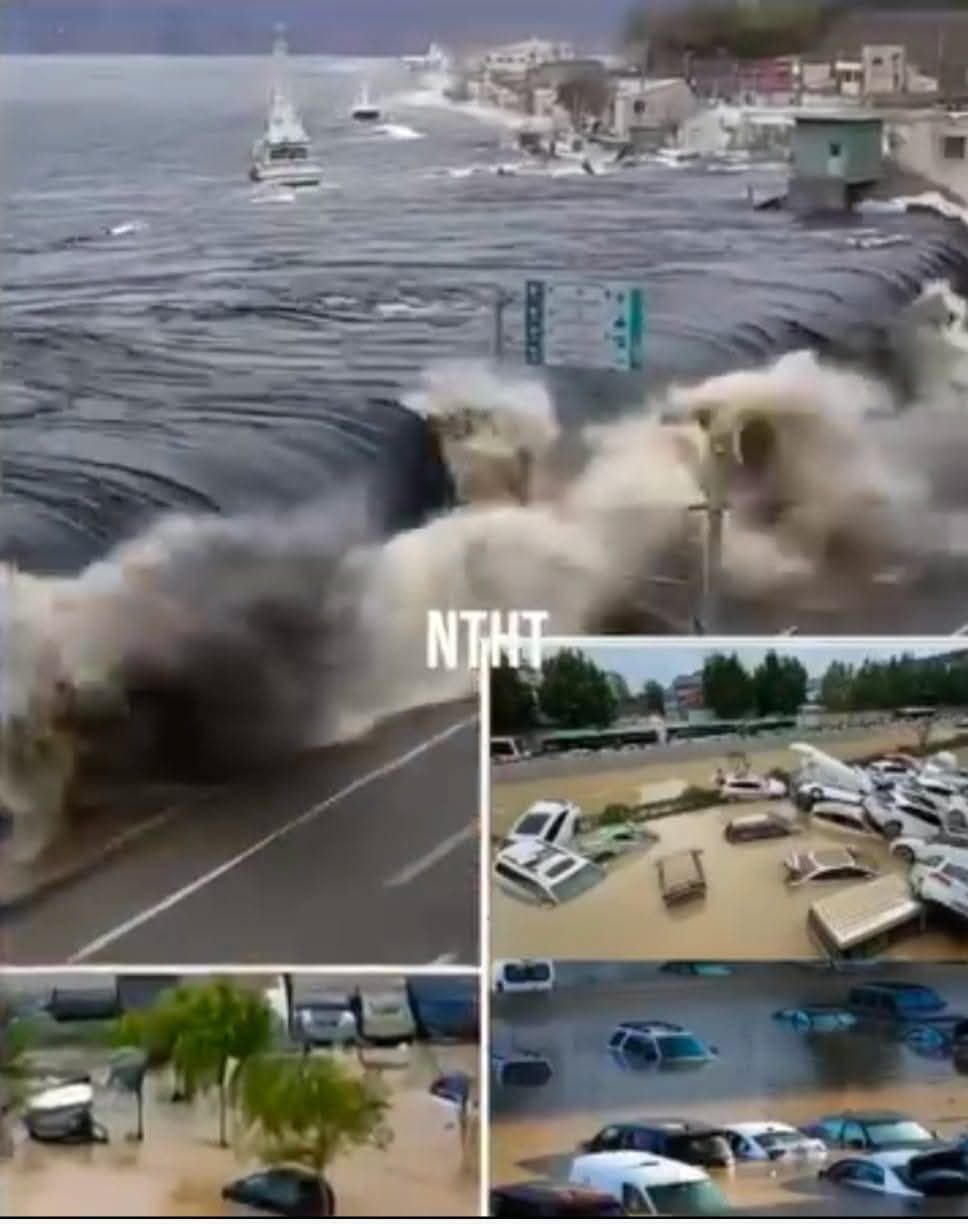9.1 magnitude earthquake also causes a large Tidal in the city of…See more

Tsunami Earthquake Explained: How It All Started?
A tsunami earthquake usually starts when a large earthquake occurs beneath the ocean, especially in subduction zones where one tectonic plate is forced beneath another.
In these zones, immense stress builds up as an oceanic plate pushes against and slowly slides underneath a continental plate.
When this stress becomes too great, the edge of the overriding plate snaps and moves suddenly, often causing vertical displacement of the seafloor—either lifting it up or pushing it down.
This sudden movement displaces a massive column of seawater, creating either a bulge or a dip on the ocean’s surface.
Gravity then pulls the water back to its normal state, which triggers powerful tsunami waves that travel rapidly away from the epicenter across the ocean.
In the deep sea, these tsunami waves might be barely noticeable, appearing as small swells.
But as they approach shallow coastal waters, they slow down and increase dramatically in height, sometimes rising into walls of water that flood coastal areas.



